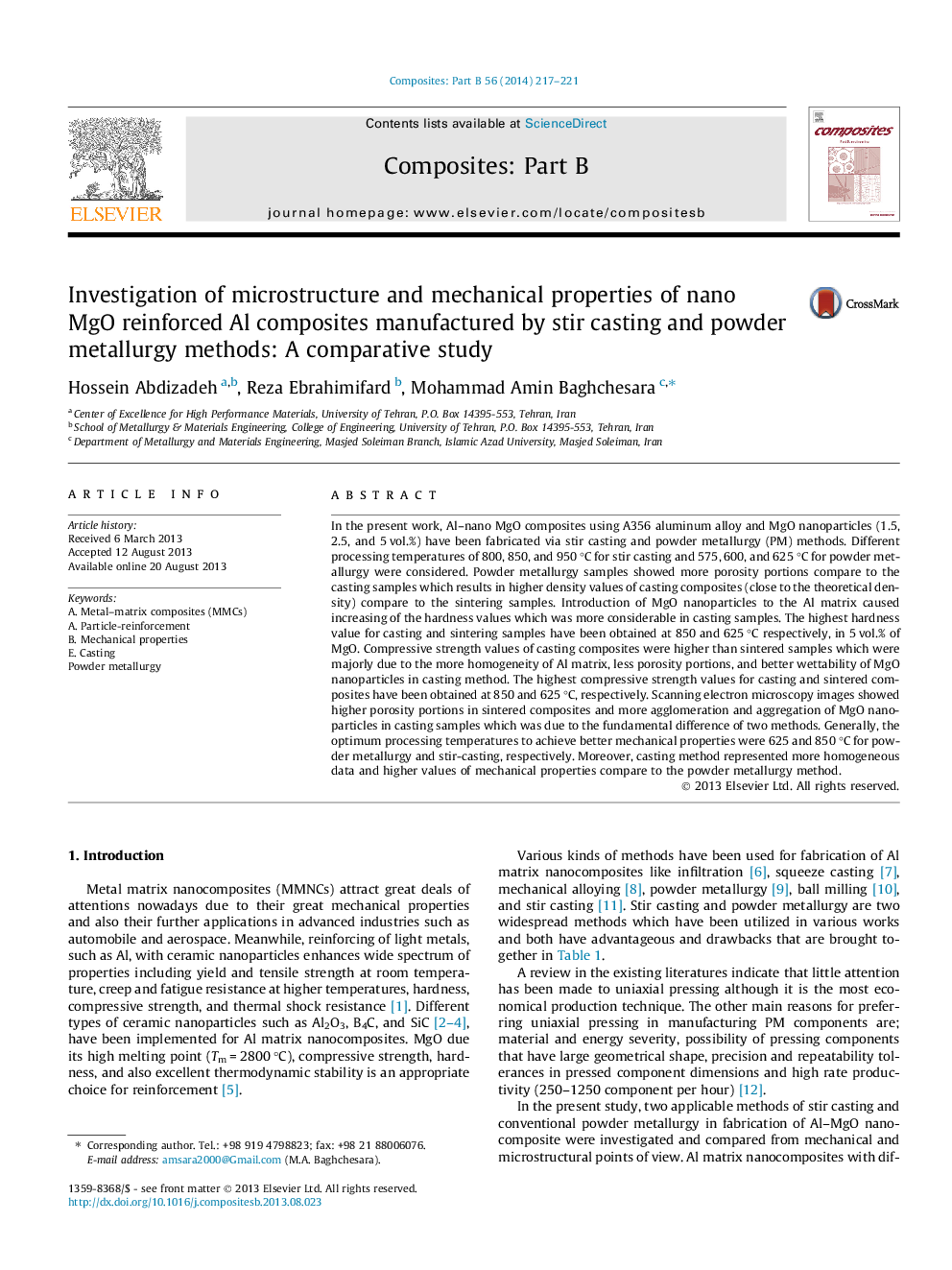| Article ID | Journal | Published Year | Pages | File Type |
|---|---|---|---|---|
| 817926 | Composites Part B: Engineering | 2014 | 5 Pages |
Abstract
In the present work, Al-nano MgO composites using A356 aluminum alloy and MgO nanoparticles (1.5, 2.5, and 5 vol.%) have been fabricated via stir casting and powder metallurgy (PM) methods. Different processing temperatures of 800, 850, and 950 °C for stir casting and 575, 600, and 625 °C for powder metallurgy were considered. Powder metallurgy samples showed more porosity portions compare to the casting samples which results in higher density values of casting composites (close to the theoretical density) compare to the sintering samples. Introduction of MgO nanoparticles to the Al matrix caused increasing of the hardness values which was more considerable in casting samples. The highest hardness value for casting and sintering samples have been obtained at 850 and 625 °C respectively, in 5 vol.% of MgO. Compressive strength values of casting composites were higher than sintered samples which were majorly due to the more homogeneity of Al matrix, less porosity portions, and better wettability of MgO nanoparticles in casting method. The highest compressive strength values for casting and sintered composites have been obtained at 850 and 625 °C, respectively. Scanning electron microscopy images showed higher porosity portions in sintered composites and more agglomeration and aggregation of MgO nanoparticles in casting samples which was due to the fundamental difference of two methods. Generally, the optimum processing temperatures to achieve better mechanical properties were 625 and 850 °C for powder metallurgy and stir-casting, respectively. Moreover, casting method represented more homogeneous data and higher values of mechanical properties compare to the powder metallurgy method.
Keywords
Related Topics
Physical Sciences and Engineering
Engineering
Engineering (General)
Authors
Hossein Abdizadeh, Reza Ebrahimifard, Mohammad Amin Baghchesara,
